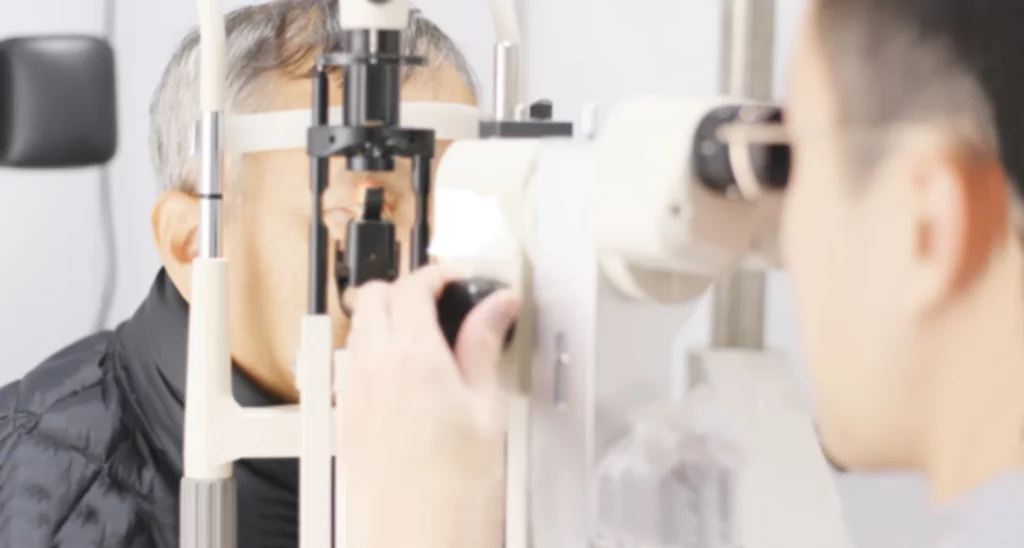Glaucoma is a serious eye condition that affects millions of people worldwide. It is often referred to as the “silent thief of sight” because it can cause irreversible vision loss without any noticeable symptoms in the early stages. However, with early detection and proper treatment, the progression of glaucoma can be slowed down, and vision loss can be minimized.
Understanding Glaucoma: An Overview
Glaucoma is a group of eye diseases that damage the optic nerve, which connects the eye to the brain. The optic nerve is responsible for transmitting visual information from the eye to the brain, allowing us to see. When the optic nerve is damaged, it can lead to vision loss or blindness.
In conclusion, glaucoma is a serious eye condition that can lead to irreversible vision loss if left untreated. Recognizing the glaucoma symptoms and treatment and understanding the available treatment options are essential for managing glaucoma and preserving vision. Regular eye examinations and early intervention play a vital role in preventing further vision deterioration and maintaining eye health.
Glaucoma is often referred to as the “silent thief of sight” because it typically progresses slowly and without any noticeable symptoms until significant vision loss has occurred. This is why regular eye exams are crucial for early detection and treatment of glaucoma.

What is Glaucoma?
Glaucoma occurs when there is increased pressure inside the eye, known as intraocular pressure (IOP). This increased pressure can cause damage to the optic nerve over time, leading to vision loss.
The buildup of intraocular pressure in glaucoma is usually due to a problem with the eye’s drainage system, which leads to fluid not being able to drain properly. This results in a buildup of fluid and pressure inside the eye, putting strain on the optic nerve.
The Different Types of Glaucoma
There are several types of glaucoma, each with its own set of risk factors and characteristics. Primary open-angle glaucoma is the most common type and develops slowly over time. Angle-closure glaucoma, on the other hand, can occur suddenly and is considered a medical emergency.
Normal-tension glaucoma is a type of glaucoma where optic nerve damage and vision loss occur despite normal intraocular pressure. This type of glaucoma is not fully understood and may be related to poor blood flow to the optic nerve. Secondary glaucoma is caused by other eye conditions or diseases, such as uveitis or diabetes.
Recognizing the Symptoms of Glaucoma
Early detection of glaucoma is crucial in preventing further vision loss. However, since glaucoma is often asymptomatic in the early stages, it can be difficult to recognize the signs. It is essential to be aware of the potential warning signs and risk factors associated with glaucoma.
Glaucoma is a progressive eye disease that damages the optic nerve, usually due to high pressure within the eye. This damage can lead to irreversible vision loss if left untreated. Regular eye exams are essential in detecting glaucoma early, as the symptoms may not be noticeable until significant damage has occurred. Learn more about irreversible vision loss on https://www.ncbi.nlm.nih.gov/pmc/articles/PMC8597499/
Early Warning Signs
Common early warning signs of glaucoma include blurred vision, loss of peripheral vision, halo around lights, and difficulty adjusting to darkness. These symptoms may be subtle and may not cause noticeable discomfort or vision changes.
In some cases, individuals may experience eye pain, redness, or headaches as a result of increased eye pressure associated with glaucoma. These symptoms should not be ignored and warrant immediate medical attention to prevent further damage to the optic nerve.
Progression of Glaucoma Symptoms
If left untreated, glaucoma can progress and cause more severe symptoms, such as tunnel vision, complete vision loss, and even blindness. It is important to seek immediate medical attention if you experience any changes in your vision.
Regular monitoring and treatment, such as eye drops, laser therapy, or surgery, can help manage glaucoma and prevent vision loss. It is crucial to follow your eye care provider’s recommendations and attend scheduled follow-up appointments to monitor the progression of the disease and adjust treatment as needed.
Risk Factors for Glaucoma
Several factors can increase the risk of developing glaucoma. Understanding these risk factors can help individuals take proactive measures to protect their eye health.
Glaucoma is often referred to as the “silent thief of sight” because it typically progresses slowly and without any noticeable symptoms until significant vision loss occurs. Regular eye exams are crucial for early detection and treatment of glaucoma.
Age and Glaucoma
Glaucoma is more common in older adults, particularly those over the age of 60. However, it can affect people of all ages, including infants and young adults.
As we age, the risk of developing glaucoma increases due to changes in the eye’s drainage system and overall eye health. This makes regular eye check-ups essential, especially for individuals in the older age groups. To read more about drainage system click here.
Genetic Factors in Glaucoma
Family history plays a significant role in the development of glaucoma. If you have a close relative, such as a parent or sibling, with glaucoma, your risk of developing the condition is higher.
Genetic predisposition to glaucoma can be a key factor in determining an individual’s risk. Researchers have identified certain gene variations that may increase susceptibility to glaucoma, highlighting the importance of understanding one’s family history when assessing the risk of developing this eye condition.
Diagnostic Procedures for Glaucoma
Early detection of glaucoma is key to preventing vision loss. There are several diagnostic procedures that eye care professionals use to detect and diagnose glaucoma.
Glaucoma, often referred to as the “silent thief of sight,” is a group of eye conditions that damage the optic nerve and can lead to vision loss or blindness if left untreated. It is crucial for individuals, especially those at higher risk such as individuals over the age of 60, individuals with a family history of glaucoma, and individuals of African, Hispanic, or Asian descent, to undergo regular eye exams to detect glaucoma in its early stages.
Comprehensive Eye Exam
A comprehensive eye exam is the first step in diagnosing glaucoma. This exam may include a visual acuity test, tonometry to measure eye pressure, and a dilated eye examination to evaluate the health of the optic nerve.
During a dilated eye examination, eye drops are used to dilate the pupils, allowing the eye care professional to get a clear view of the optic nerve and retina at the back of the eye. Any changes or abnormalities in these structures can indicate the presence of glaucoma.
Advanced Diagnostic Tests
Additional advanced diagnostic tests, such as optical coherence tomography (OCT) and visual field testing, may be necessary to assess the extent of optic nerve damage and monitor disease progression.
Optical coherence tomography (OCT) is a non-invasive imaging test that uses light waves to take cross-section pictures of the retina. This allows eye care professionals to measure the thickness of the optic nerve fibers and detect any thinning, which is a sign of glaucoma progression. Visual field testing, on the other hand, assesses the full horizontal and vertical range of vision to identify any areas of vision loss or blind spots caused by glaucoma.

Current Treatment Options for Glaucoma
While there is no cure for glaucoma, several treatment options are available to manage the disease, slow down its progression, and preserve vision.
Medication Therapies
Eye drops are the most common treatment for glaucoma. These eye drops work by either reducing the production of aqueous humor (the fluid inside the eye) or improving its drainage. In some cases, oral medications or laser therapy may be recommended.
It’s important to note that the effectiveness of medication therapies can vary from patient to patient. Some individuals may require a combination of different eye drops to effectively control their intraocular pressure and manage their glaucoma symptoms. Additionally, adherence to the prescribed medication regimen is crucial for successful treatment outcomes.
Surgical Procedures
If medications alone are not sufficient, surgical procedures may be considered. These procedures aim to create alternative pathways for fluid drainage or reduce the production of fluid within the eye, thereby lowering intraocular pressure.
Glaucoma surgeries have evolved significantly in recent years, with minimally invasive techniques gaining popularity. Procedures such as trabeculectomy, minimally invasive glaucoma surgery (MIGS), and laser trabeculoplasty offer effective options for patients who do not respond well to traditional treatments. These surgeries are aimed at improving the outflow of fluid from the eye and can help reduce the need for long-term medication use.
Other resources: Understanding Glaucoma Causes, Symptoms, and Prevention

